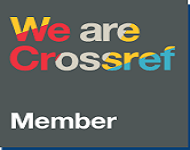Edukasi Manfaat Olahraga Terstruktur Bagi Pembentukan Karakter 5C Anak Pada Orang Tua Murid Humble Basketball Academy di Kota Surakarta
DOI:
https://doi.org/10.33394/jpu.v3i1.5095Keywords:
Education, Organized Sports, 5C’s Character.Abstract
The purpose of this community service program is to provide an understanding of the benefits of structured exercise for children. This program is intended for parents of students at Humble Basketball Academy Surakarta City, Central Java. The respondents to this activity were 40 people. The community service program is carried out by interactive discussion, question and answer, and evaluation methods. The results of the activity showed that parents get useful information related to the potential of children that can be developed from their participation in the basketball academy. Through this activity parents realize the benefits obtained by children through structured sports activities not only limited to physical health and motor development, but also emotional maturity and social intelligence through practice of 5C’s characters. The community service program is expected to assist Humble Basketball Academy managers in convincing parents about the benefits of child development through sports activities reviewed from academic studies.
References
Amado-Alonso, D., León-del-Barco, B., Mendo-Lázaro, S., Sánchez-Miguel, P., & Iglesias Gallego, D. (2019). Emotional Intelligence and the Practice of Organized Physical-Sport Activity in Children. Sustainability, 11(6), 1615. https://doi.org/10.3390/su11061615
Aviyah, E., & Farid, M. (2014). Religiusitas, Kontrol Diri dan Kenakalan Remaja. Persona:Jurnal Psikologi Indonesia, 3(02). https://doi.org/10.30996/persona.v3i02.376
Bruner, M. W., Balish, S. M., Forrest, C., Brown, S., Webber, K., Gray, E., McGuckin, M., Keats, M. R., Rehman, L., & Shields, C. A. (2017). Ties That Bond: Youth Sport as a Vehicle for Social Identity and Positive Youth Development. Research Quarterly for Exercise and Sport, 88(2), 209–214. https://doi.org/10.1080/02701367.2017.1296100
Chang, Y.-J., Lehmann, A., Winter, L., & Finkbeiner, M. (2018). The Sustainable Child Development Index (SCDI) for Countries. Sustainability, 10(5), 1563. https://doi.org/10.3390/su10051563
Fraser-Thomas, J. L., Côté, J., & Deakin, J. (2005). Youth sport programs: An avenue to foster positive youth development. Physical Education & Sport Pedagogy, 10(1), 19–40. https://doi.org/10.1080/1740898042000334890
Hu, B. Y., Wu, Z., & Kong, Z. (2021). Family Physical Activities Choice, Parental Views of Physical Activities, and Chinese Preschool Children’s Physical Fitness and Motor Development. Early Childhood Education Journal. https://doi.org/10.1007/s10643-021-01190-5
Lerner, R. M., Lerner, J. V., Almerigi, J. B., Theokas, C., Phelps, E., Gestsdottir, S., Naudeau, S., Jelicic, H., Alberts, A., Ma, L., Smith, L. M., Bobek, D. L., Richman-Raphael, D., Simpson, I., Christiansen, E. D., & von Eye, A. (2005). Positive Youth Development, Participation in Community Youth Development Programs, and Community Contributions of Fifth-Grade Adolescents: Findings From the First Wave Of the 4-H Study of Positive Youth Development. The Journal of Early Adolescence, 25(1), 17–71. https://doi.org/10.1177/0272431604272461
Murphy, J., Sweeney, M. R., & McGrane, B. (2020). Physical Activity and Sports Participation in Irish Adolescents and Associations with Anxiety, Depression and Mental Wellbeing. Findings from the Physical Activity and Wellbeing (Paws) Study. Physical Activity and Health, 4(1), 107–119. https://doi.org/10.5334/paah.58
Oja, P., Titze, S., Kokko, S., Kujala, U. M., Heinonen, A., Kelly, P., Koski, P., & Foster, C. (2015). Health benefits of different sport disciplines for adults: Systematic review of observational and intervention studies with meta-analysis. British Journal of Sports Medicine, 49(7), 434–440. https://doi.org/10.1136/bjsports-2014-093885
Preedy, P., Duncombe, R., & Gorely, T. (2022). Physical development in the early years: The impact of a daily movement programme on young children’s physical development. Education 3-13, 50(3), 289–303. https://doi.org/10.1080/03004279.2020.1849345
Santrock, J. W. (2011). Child development (13th ed). McGraw-Hill Humanities.
Straker, L., Maslen, B., Burgess-Limerick, R., Johnson, P., & Dennerlein, J. (2010). Evidence-based guidelines for the wise use of computers by children: Physical development guidelines. Ergonomics, 53(4), 458–477. https://doi.org/10.1080/00140130903556344
Wibowo, N. R., & Wimbarti, S. (2019). The perception of attachment effect in parents and peers on aggressive behavior in male adolescents. Psikohumaniora: Jurnal Penelitian Psikologi, 4(1), 53. https://doi.org/10.21580/pjpp.v4i1.3118
Downloads
Published
How to Cite
Issue
Section
Citation Check
License
Authors who publish with this journal agree to the following terms:
- Authors retain copyright and grant the journal right of first publication with the work simultaneously licensed under a Creative Commons Attribution License (CC BY-SA 4.0) that allows others to share the work with an acknowledgment of the work's authorship and initial publication in this journal.
- Authors are able to enter into separate, additional contractual arrangements for the non-exclusive distribution of the journal's published version of the work (e.g., post it to an institutional repository or publish it in a book), with an acknowledgment of its initial publication in this journal.
- Authors are permitted and encouraged to post their work online (e.g., in institutional repositories or on their website) prior to and during the submission process, as it can lead to productive exchanges, as well as earlier and greater citation of published work (See The Effect of Open Access).





